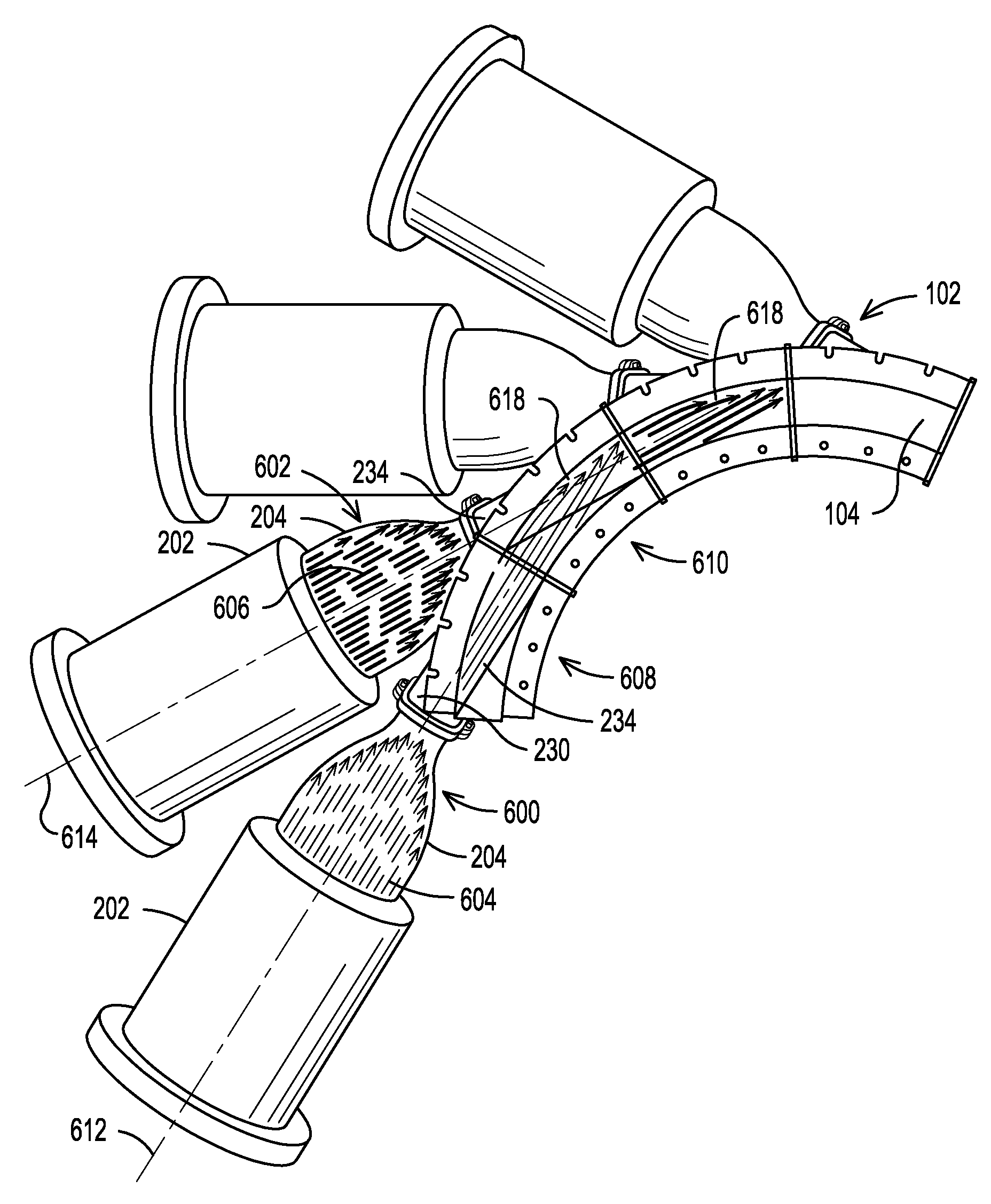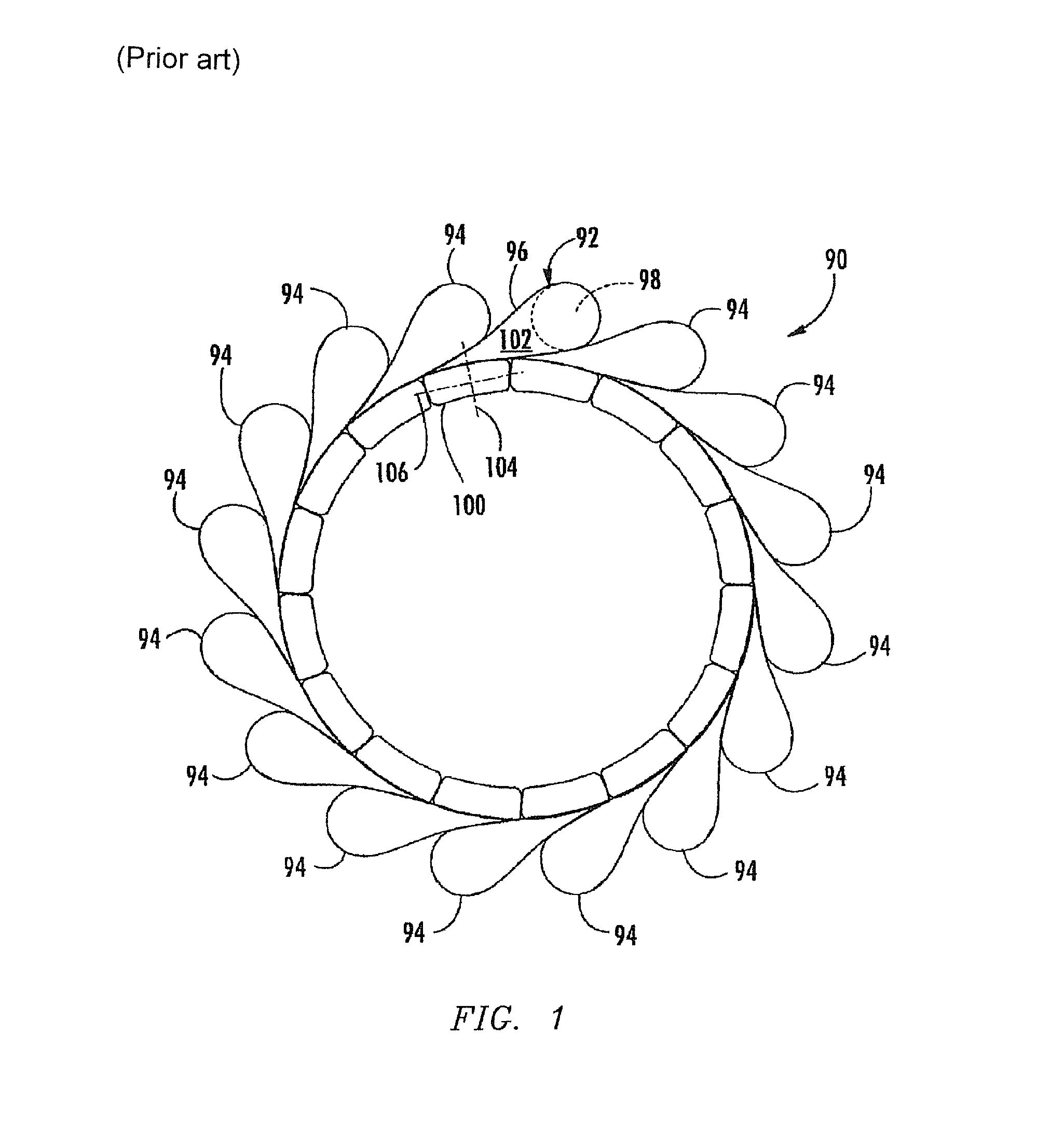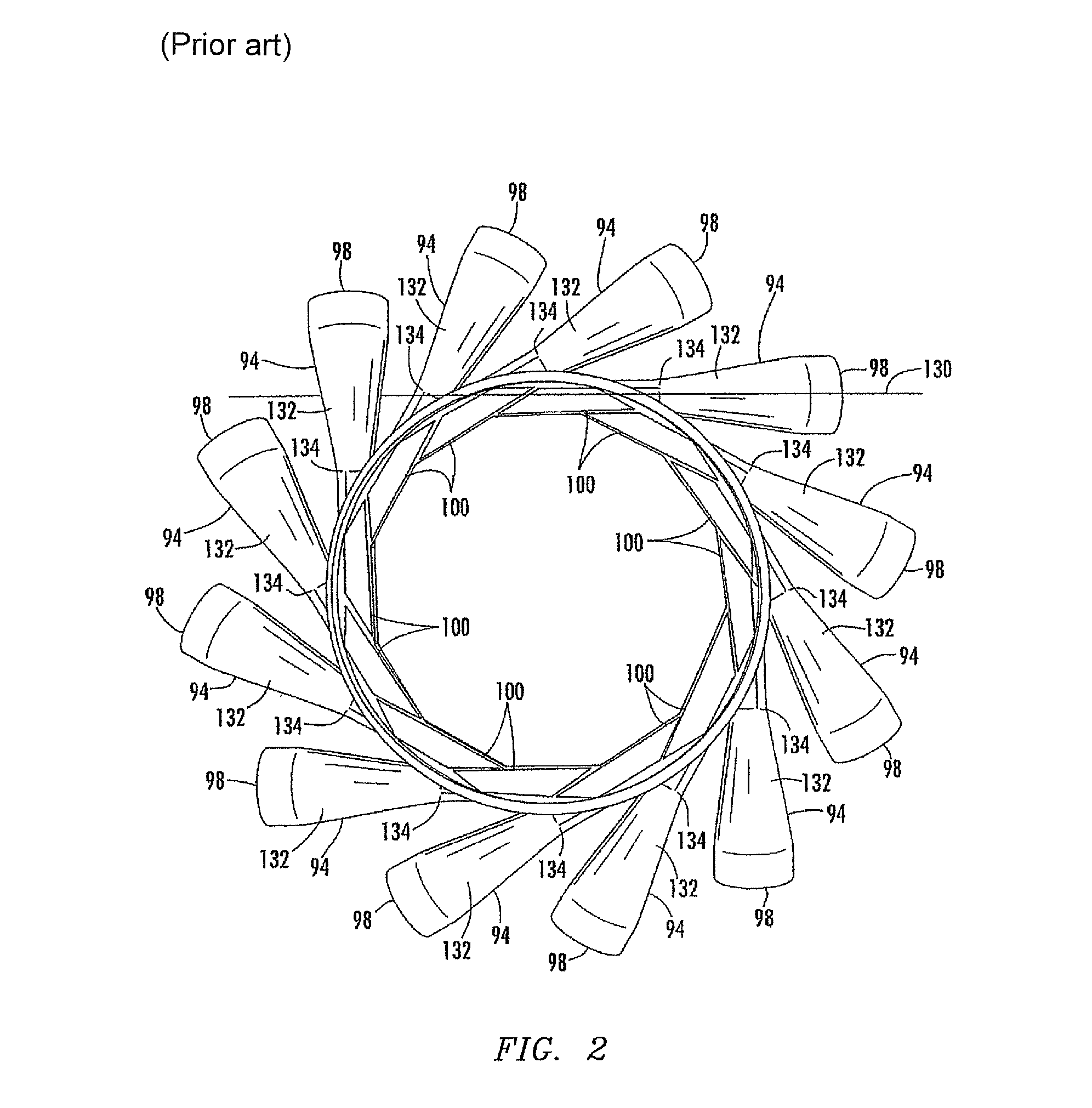Modular transvane assembly
a transvane and module technology, applied in the direction of machines/engines, liquid fuel engines, lighting and heating apparatus, etc., can solve the problems of increasing gas flow loss through seals, reducing the amount of energy present, and requiring substantial cooling
- Summary
- Abstract
- Description
- Claims
- Application Information
AI Technical Summary
Problems solved by technology
Method used
Image
Examples
Embodiment Construction
[0024]The inventors of the present system have designed an innovative arrangement, made of multiple, modular, interchangeable, transvane assemblies which direct and then combine individual gas flows from the cans of a can annular combustor of a gas turbine combustion engine into a singular annular gas flow with a circumferential component to the flow, which is then directed to the first row of turbine blades. The inventors of the present system observed that prior configurations for delivering flows of can-annular combustors to the first row of turbine blades kept each flow separate and distinct from the other flows all the way to the first row of turbine blades. As a result, between each flow about to contact the first row of turbine blades there is a gap, or trailing edge, where there is reduced or no flow delivered to the blades. These trailing edges, which vary in magnitude from design to design, create flow disturbances and associated energy losses. Consequently, as the first r...
PUM
 Login to view more
Login to view more Abstract
Description
Claims
Application Information
 Login to view more
Login to view more - R&D Engineer
- R&D Manager
- IP Professional
- Industry Leading Data Capabilities
- Powerful AI technology
- Patent DNA Extraction
Browse by: Latest US Patents, China's latest patents, Technical Efficacy Thesaurus, Application Domain, Technology Topic.
© 2024 PatSnap. All rights reserved.Legal|Privacy policy|Modern Slavery Act Transparency Statement|Sitemap



